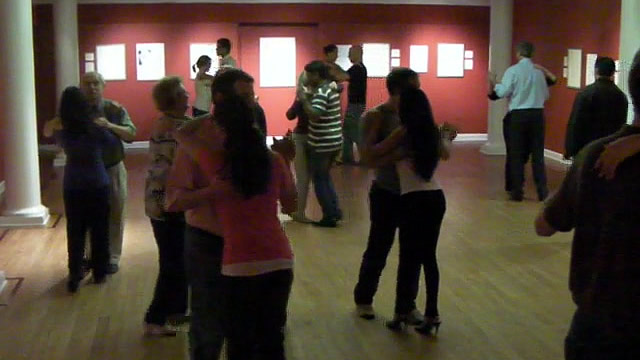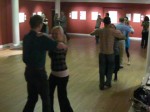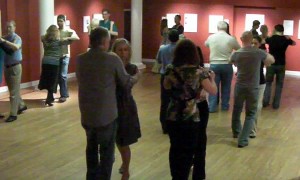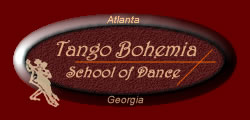Beginner Tango Course Explained
Here you will find out what to expect when you join our Beginner Dance Classes in Atlanta. First of all I want to make sure you have a fun time in a class while enjoying great music and dancing with different partners (unless you prefer to stay with the one you came in).
In addition to having a good time you will learn how to dance Argentine Tango – how to walk in a “Tango” way, how to connect with your partner, how to hear the music, how to lead, how to follow, etc.
8-week (8-class) Beginner Tango Course Description
Class 1: We usually start a bit later, as new students are signing in and taking care of the admin stuff. But not too much later, about 10 minutes or so. We certainly make up for that by ending the class later as well. I would not dare to take away precious dance time from anybody :)
We get on the dance floor and begin by a brief introduction. In addition to a name and what part of Atlanta a person lives in, I like to add one more simple dance related question. It varies, so I’ll keep it a surprise. Then the music comes on and we …dance. Yes, dance. I want folks to realize later how far everyone progresses after only 8 weekly Tango classes.
After that we begin to “play” with music by walking in rhythmic patterns, quick and slow, big and small, solo and with partners. We also learn how to connect in a “practice hold”. This hold allows beginning dancers to maintain some distance so everyone’s feet are safe. When we dance again at the end of the very first class we already can see a dramatic difference compared to just 60 short minutes ago.
Class 2: With the foundation we have built one week prior I begin to introduce some steps (or elements) of Tango. While they are not complex and quickly repeated while dancing solo, it does take some time to “get” them when dancing with a partner. After all, we all are great dancers when we do it on our own, aren’t we? :)
Open dance hold is introduced in addition to practice hold. I use music from various Tango orchestras, so our dancing changes according to it. Some pieces are more rhythmic, others are more melodic. Interpretation of music is up to leaders. Followers do not make their own interpretation, otherwise the dance will fall apart. At least we want to keep it that way in the Beginner Course. It does take two to Tango as the old adage goes.
By the way, during the class we do something that equalizes the roles a bit. What is it? You’ll find out when you join. It does cause some excitement, I must say :)
Class 3: We start with a few warm up dances. I might “silently” review what we learned last week between songs, but this is not important. Slowly but surely everyone will get the moves in their muscle memory. After we are warmed up it is time for La Cruzada (the cross), a very Tango-like step. All I am going to say here that the cross will mostly relate to followers during this course. It is optional for leaders, who need to focus on how to lead it.
In Argentine Tango classes that I teach there are very few rules; one of them is that Every Move is Lead and Every Move is Followed. I believe this is the essence of Tango, this is what makes it a wonderfully connected dance where two people move like one to music. But I digress…
Class 4: Approaching the middle of the course. Start as usual with warm up dances. I’ll show one more element we can use to dance in place. The word traffic relates not just to highways but to the line of dance as well :) Then we begin learning another very Tango-like step, Ocho Adelante. This fancy name means Forward Eight.
Forward Eight is what a follower does with her feet – curvy moves drawing figure 8 on the floor. Of course, like everything else it will be led by leaders. Everyone has their work cut out for them, myself included. :) We work some without music, then with music, practice in place, then incorporate the element in the actual dance. Time flies and the class transitions to Practica (a practice time after each Beginner class and before Intermediate).
(to be continued)




